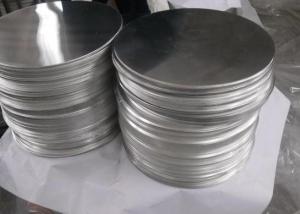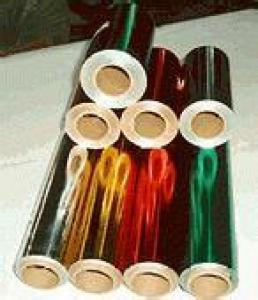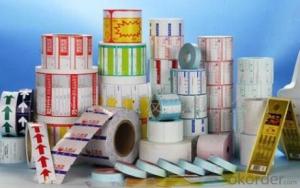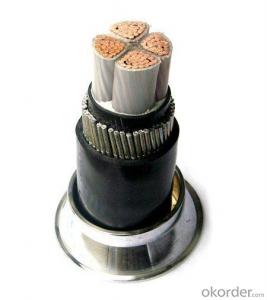striped steel
- Loading Port:
- China Main Port
- Payment Terms:
- TT OR LC
- Min Order Qty:
- -
- Supply Capability:
- -
OKorder Service Pledge
OKorder Financial Service
You Might Also Like
ERW pipes are used in Water Pipelines, Agriculture and Irrigation (Water Mains, Sewerage Systems, Industrial Water Lines, Plant Piping, Deep Tube-Wells & Casing Pipes). Other popular application area includes usage in gas pipe lines (pipe lines for natural gas, LPG and other non-toxic gases). The SW is meant for shallow water applications This could be in a canal, natural stream, culvert, or pipe
Steel Pipes manufacters and Exports huge range of ERW Galvanized Steel Tubes & Steel Pipes. For pipes or tubes size 8 inch (219 mm) OD and below, strip is fed into a set of forming rolls which consists of horizontal and vertical rollers so placed as to gradually from the flat strip in to a tube which is then allowed to pass the welding electrodes. The electrodes are copper disks connected to the secondary of a revolving transformer assembly. The copper disk electrodes make contact on each side of the seam and temperature is raised to the welding point. Outside flash is removed by a cutting tool as the tube leaves the electrodes, inside flash is removed either by an air hammer or by passing a mandnel through the welded tube after the tube has been cooled. This is termed as Electric Resistance Welded or ERW tube/pipe.
- Standard:DIN2391 part 2 , DIN EN10305-1, DIN17175 etc;
- Material: ST35,ST45,ST52.
- Manufacturing method: cold-rolled / cold-drawn
- Delivery condition: BK,BKS,SR,GBK,NBK.
- Certificate
- Factory Certification: 2.2 according to EN
- Acceptance Test Certificate:3.1 according to EN 10204
- Packing:
- in bundles tied with steel strips. External packing by wooden cases if the wall thickness/OD ratio is low.
- Oil-coating is generally necessary especially for export.
- Q:What are the cutlery production methods using stainless steel scrap?
- There are several cutlery production methods that utilize stainless steel scrap as a raw material. One common method is the melting and casting process. In this method, the stainless steel scrap is melted down in a furnace to create molten metal. The molten metal is then poured into molds to create the desired cutlery shapes. This process allows for the recycling of stainless steel scrap into new cutlery items. Another production method is the powder metallurgy process. In this method, stainless steel scrap is first crushed into fine particles or powder. The powder is then compacted into the desired shape using high-pressure machinery. The compacted powder is then heated in a furnace to bond the particles together and form a solid cutlery item. This method is often used for producing high-quality and intricate designs of cutlery. Additionally, there is the forging process, which involves heating the stainless steel scrap and shaping it through hammering or pressing. This method is commonly used for producing high-end and durable cutlery items. The stainless steel scrap is heated to a specific temperature and then hammered or pressed into the desired shape. The process of forging improves the strength and durability of the cutlery. Overall, these production methods allow for the effective utilization of stainless steel scrap in the production of cutlery. By recycling and repurposing scrap materials, these methods contribute to sustainable and environmentally-friendly manufacturing practices.
- Q:How is stainless steel scrap tested for composition?
- Stainless steel scrap is typically tested for composition through various methods such as spectrometry, X-ray fluorescence (XRF), and optical emission spectroscopy (OES). These techniques analyze the elemental composition of the scrap, measuring the amounts of different elements present in the stainless steel, such as chromium, nickel, and iron. This helps determine the grade and quality of the stainless steel scrap.
- Q:How is stainless steel scrap used in the production of household items?
- Stainless steel scrap is widely used in the production of household items due to its durability, corrosion resistance, and aesthetic appeal. This type of scrap is typically obtained from various sources, such as manufacturing waste, construction sites, and recycling centers. Once collected, stainless steel scrap undergoes a recycling process to transform it into reusable material. This process involves sorting and segregating the scrap based on its grade and composition. The scrap is then melted down in an electric arc furnace and refined to remove impurities, resulting in a high-quality stainless steel alloy. The recycled stainless steel is then used in the production of a wide range of household items. One of the most common uses is in the manufacturing of kitchen appliances, such as refrigerators, ovens, dishwashers, and sinks. Stainless steel scrap provides the necessary strength and resistance to heat, moisture, and chemicals, making it an ideal choice for these applications. Another popular use of stainless steel scrap is in the production of cutlery and kitchen utensils. The durability and corrosion resistance of stainless steel ensure that these items can withstand frequent use and cleaning without losing their shine or functionality. Additionally, stainless steel scrap is utilized in the production of bathroom fixtures like faucets, showerheads, and towel rails. Its resistance to water and rust makes it perfect for these applications, ensuring longevity and easy maintenance. Beyond kitchen and bathroom items, stainless steel scrap is also used in the production of furniture, household hardware, and decorative elements. Its sleek and modern appearance adds a touch of elegance to various household objects, while its strength and resistance guarantee their longevity. Overall, stainless steel scrap plays a crucial role in the production of household items due to its many advantageous properties. By recycling and reusing this valuable material, we not only conserve natural resources but also contribute to sustainable and environmentally-friendly manufacturing practices.
- Q:How is stainless steel scrap formed into new products?
- Stainless steel scrap is formed into new products through a process called recycling, where the scrap is collected, sorted, and cleaned. It is then melted down in a furnace and transformed into molten stainless steel. This molten steel is cast into various shapes, such as bars, sheets, or coils, depending on the desired final product. These new stainless steel products can be further processed and fabricated to meet specific requirements in industries like construction, automotive, or manufacturing.
- Q:What are the heat resistance properties of stainless steel scrap?
- Stainless steel scrap generally exhibits excellent heat resistance properties due to its high chromium content, which forms a protective oxide layer on the surface. This oxide layer helps prevent oxidation and maintains the integrity of the scrap even at high temperatures.
- Q:Stainless steel 304. How much is the scrap now?
- Are crap, now the bar prices are more than ten, only six or seven pieces of scrap prices
- Q:How is stainless steel scrap used in the production of kitchen sinks?
- The production of kitchen sinks heavily relies on stainless steel scrap. Firstly, various sources such as industrial waste, discarded appliances, and manufacturing leftovers are tapped to collect stainless steel scrap. Subsequently, this scrap is meticulously sorted and processed to eliminate impurities, ensuring the resulting stainless steel meets high-quality standards. Once the stainless steel scrap is purified, it undergoes melting in a furnace and is shaped into sheets or coils. These sheets become the primary material for manufacturing kitchen sinks. By employing specialized machinery, the stainless steel sheets are cut and molded into the desired sink design. The subsequent stage involves the welding or joining of different sink parts. Stainless steel scrap can also be utilized during this phase as filler material for welding joints. This integration helps uphold the sink's integrity and strength, guaranteeing its long-lasting durability. Moreover, stainless steel scrap can be integrated into the production of sink accessories such as drain baskets or bottom grids. These accessories are typically made from smaller pieces of stainless steel obtained from scrap materials. By incorporating stainless steel scrap into the manufacturing of these accessories, waste is minimized, and the demand for new raw materials is reduced. All in all, stainless steel scrap plays a crucial role in the production of kitchen sinks. It not only aids in waste reduction and sustainability but also contributes to the final product's strength, durability, and aesthetic appeal.
- Q:What are the potential applications of stainless steel scrap in the food processing industry?
- Stainless steel scrap has several potential applications in the food processing industry due to its unique properties and characteristics. Here are a few potential applications: 1. Equipment fabrication: Stainless steel scrap can be recycled and used to fabricate various food processing equipment such as mixers, conveyors, tanks, and storage containers. The corrosion-resistant nature of stainless steel makes it ideal for handling food products and maintaining hygiene standards. 2. Utensils and cutlery: The food processing industry requires a large number of utensils and cutlery for food preparation and serving purposes. Stainless steel scrap can be melted and molded into new utensils and cutlery, ensuring durability, resistance to staining, and easy cleaning. 3. Food packaging: Stainless steel scrap can be used to manufacture packaging materials such as cans, containers, and trays. Stainless steel packaging provides excellent strength, protection against contamination, and extended shelf life for food products. 4. Processing machinery parts: Stainless steel scrap can be utilized to create replacement parts for food processing machinery. These parts need to be corrosion-resistant, durable, and have a smooth surface to prevent food contamination. Using stainless steel scrap can help reduce costs and minimize the environmental impact of manufacturing new parts. 5. Work surfaces and countertops: Stainless steel scrap can be transformed into work surfaces and countertops in food processing facilities. Stainless steel is resistant to heat, chemicals, and bacteria, making it an ideal material for food preparation areas where hygiene is crucial. 6. Conveyor systems: Stainless steel scrap can be used to build conveyor systems, which are essential for transporting food products during the processing and packaging stages. Stainless steel conveyors offer high strength, corrosion resistance, and easy cleaning, ensuring efficient and hygienic food handling. 7. Waste management: Stainless steel scrap can also be utilized in waste management systems within the food processing industry. It can be used to create bins, containers, and chutes for the proper disposal and recycling of waste materials, promoting sustainability and environmental responsibility. Overall, the potential applications of stainless steel scrap in the food processing industry are vast, ranging from equipment fabrication to packaging materials and utensils. By recycling and reusing stainless steel scrap, the industry can reduce costs, improve sustainability, and maintain high standards of hygiene and product quality.
- Q:How can stainless steel scrap be processed to remove impurities?
- Stainless steel scrap can be processed to remove impurities through various methods such as sorting, magnetic separation, screening, and chemical treatments. Sorting involves separating different types of stainless steel scrap based on their composition. Magnetic separation uses magnets to separate ferrous impurities from the stainless steel scraps. Screening helps in removing larger impurities by passing the scrap through a mesh or sieve. Chemical treatments involve using acids or other chemicals to dissolve and remove impurities from the stainless steel scrap. These processes help in ensuring the purity and quality of the final stainless steel product.
- Q:How is magnetic stainless steel scrap separated?
- Magnetic stainless steel scrap can be separated using various methods, with the most common being magnetic separation. This process utilizes the magnetic properties of stainless steel to separate it from other materials. In magnetic separation, a magnetic field is applied to the mixture of stainless steel scrap and other materials. Since stainless steel is ferromagnetic, meaning it is attracted to magnets, it will be pulled towards the magnetic field. On the other hand, non-magnetic materials such as aluminum, copper, or plastic will not be affected by the magnetic field and will remain in the mixture. There are different types of magnetic separators used to separate stainless steel scrap, depending on the desired level of purity. One common type is the magnetic drum separator, where a rotating drum with a magnetic field attracts and separates the stainless steel scrap from the rest of the materials. Another type is the magnetic pulley, which uses a magnetic field to attract the stainless steel scrap as it passes over the pulley. In addition to magnetic separation, other techniques such as eddy current separation or density separation can be used to further refine the separation process. Eddy current separation uses a magnetic field to induce electrical currents in conductive materials, allowing the separation of non-ferrous metals like aluminum from the stainless steel. Density separation, on the other hand, relies on the difference in density between stainless steel and other materials to separate them. Overall, magnetic separation is the primary method used to separate magnetic stainless steel scrap from other materials. It is an efficient and effective process that allows for the recovery and recycling of valuable stainless steel while reducing waste and promoting sustainability.
1. Manufacturer Overview |
|
|---|---|
| Location | |
| Year Established | |
| Annual Output Value | |
| Main Markets | |
| Company Certifications | |
2. Manufacturer Certificates |
|
|---|---|
| a) Certification Name | |
| Range | |
| Reference | |
| Validity Period | |
3. Manufacturer Capability |
|
|---|---|
| a)Trade Capacity | |
| Nearest Port | |
| Export Percentage | |
| No.of Employees in Trade Department | |
| Language Spoken: | |
| b)Factory Information | |
| Factory Size: | |
| No. of Production Lines | |
| Contract Manufacturing | |
| Product Price Range | |
Send your message to us
striped steel
- Loading Port:
- China Main Port
- Payment Terms:
- TT OR LC
- Min Order Qty:
- -
- Supply Capability:
- -
OKorder Service Pledge
OKorder Financial Service
Similar products
New products
Hot products
Related keywords



















